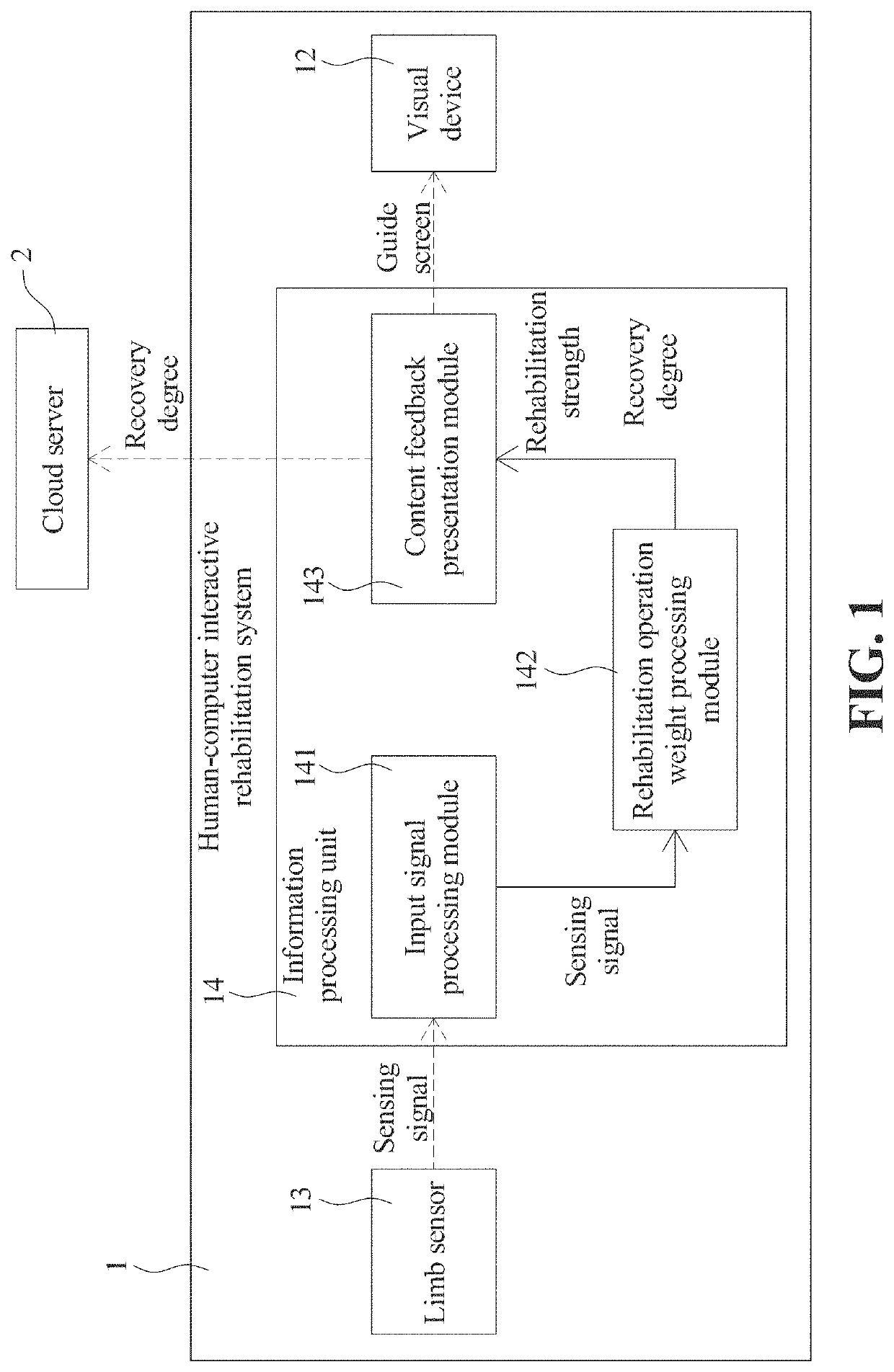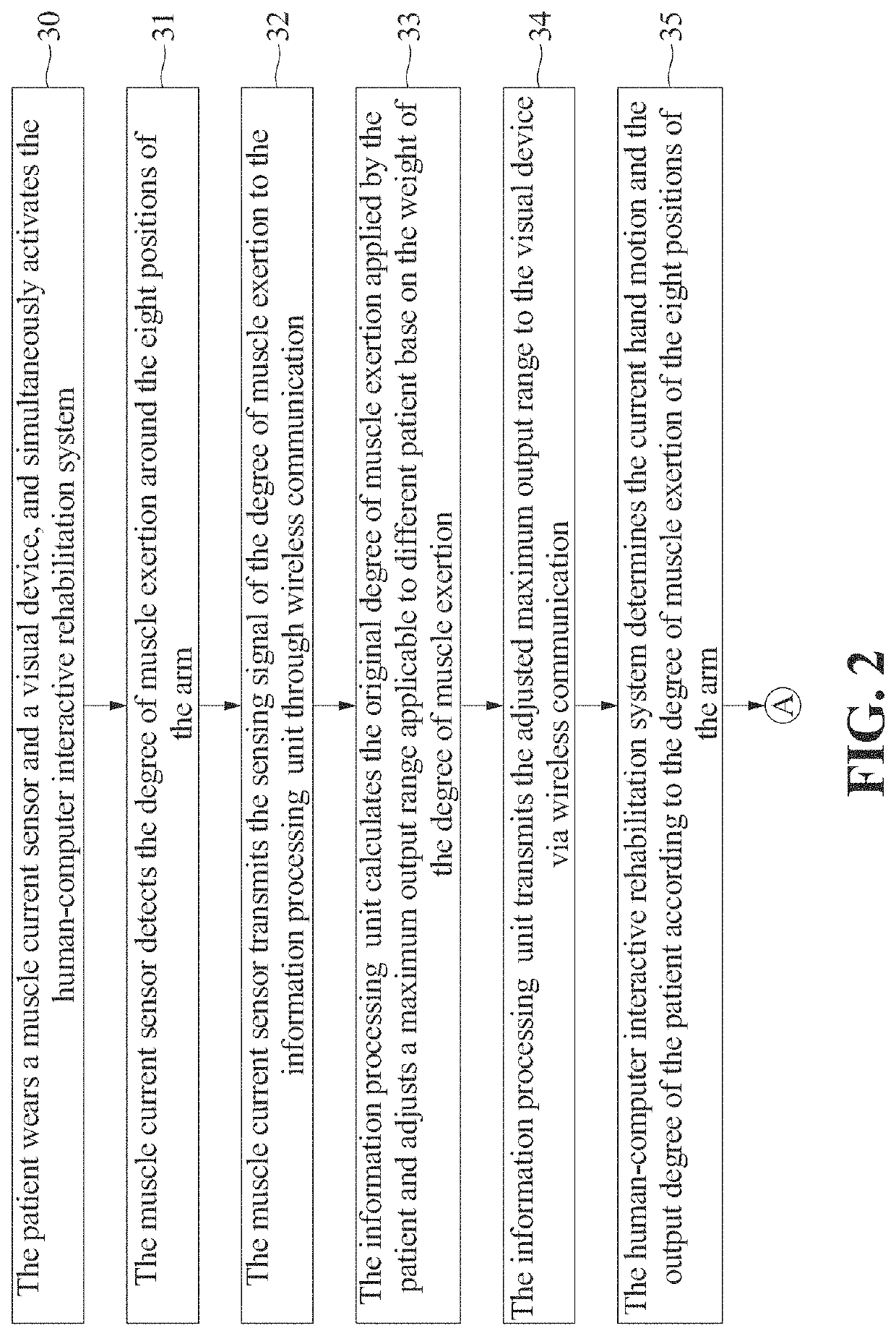Human-computer interactive rehabilitation system
a rehabilitation system and computer technology, applied in the field of human-computer interactive rehabilitation system, can solve the problems of affecting the patient's ability to take care of himself, hardly training enough ability, and hardly achieving the effect of achieving rehabilitation efficiency, strengthening community interaction and link in medical relationship, and strengthening rehabilitation strength
- Summary
- Abstract
- Description
- Claims
- Application Information
AI Technical Summary
Benefits of technology
Problems solved by technology
Method used
Image
Examples
example 1
Use of the Human-Computer Interactive Rehabilitation System for the Rehabilitation of the Hand Extension and Grip of Patients
[0036]The embodiment of the present invention is in order to use the human-computer interactive rehabilitation system 1 of the present invention for the rehabilitation of the hand extension and grip of patients with stroke sequelae (hereinafter referred to as the patient). As shown in FIG. 1, the human-computer interactive rehabilitation system 1 of the present invention comprises a visual device 12 which provides a guide screen for the patient to view, a limb sensor 13 which is worn on one of the limbs of the patient to sense the motion of the limb to generate a sensing signal, and an information processing unit 14 which establishes wireless communication with the visual device 12 and the limb sensor 13 (indicated by a dashed line), and the information processing unit 14 further comprises an input signal processing module 141, a rehabilitation operation weigh...
example 2
Use of the Human-Computer Interactive Rehabilitation System for the Rehabilitation of the Spatial Neglect Syndrome
[0052]The embodiment of the present invention is in order to use the human-computer interactive rehabilitation system 1 of the present invention for the rehabilitation of patients with stroke sequelae of the visual disorder (hereinafter referred to as the patient), especially in patients with the spatial neglect syndrome. Patients with the spatial neglect syndrome may have neglected or invisible symptoms for the spatial visual field on one side therefore strengthening the concentration practice of patients on the side of the spatial vision ignore is the focus of rehabilitation.
[0053]As shown in FIG. 7, the human-computer interactive rehabilitation system 1 of the present invention comprises a visual device 12 which provides a guide screen for the patient to view and an information processing unit 14 which establishes wireless communication with the visual device 12 (indi...
PUM
 Login to View More
Login to View More Abstract
Description
Claims
Application Information
 Login to View More
Login to View More - R&D
- Intellectual Property
- Life Sciences
- Materials
- Tech Scout
- Unparalleled Data Quality
- Higher Quality Content
- 60% Fewer Hallucinations
Browse by: Latest US Patents, China's latest patents, Technical Efficacy Thesaurus, Application Domain, Technology Topic, Popular Technical Reports.
© 2025 PatSnap. All rights reserved.Legal|Privacy policy|Modern Slavery Act Transparency Statement|Sitemap|About US| Contact US: help@patsnap.com



